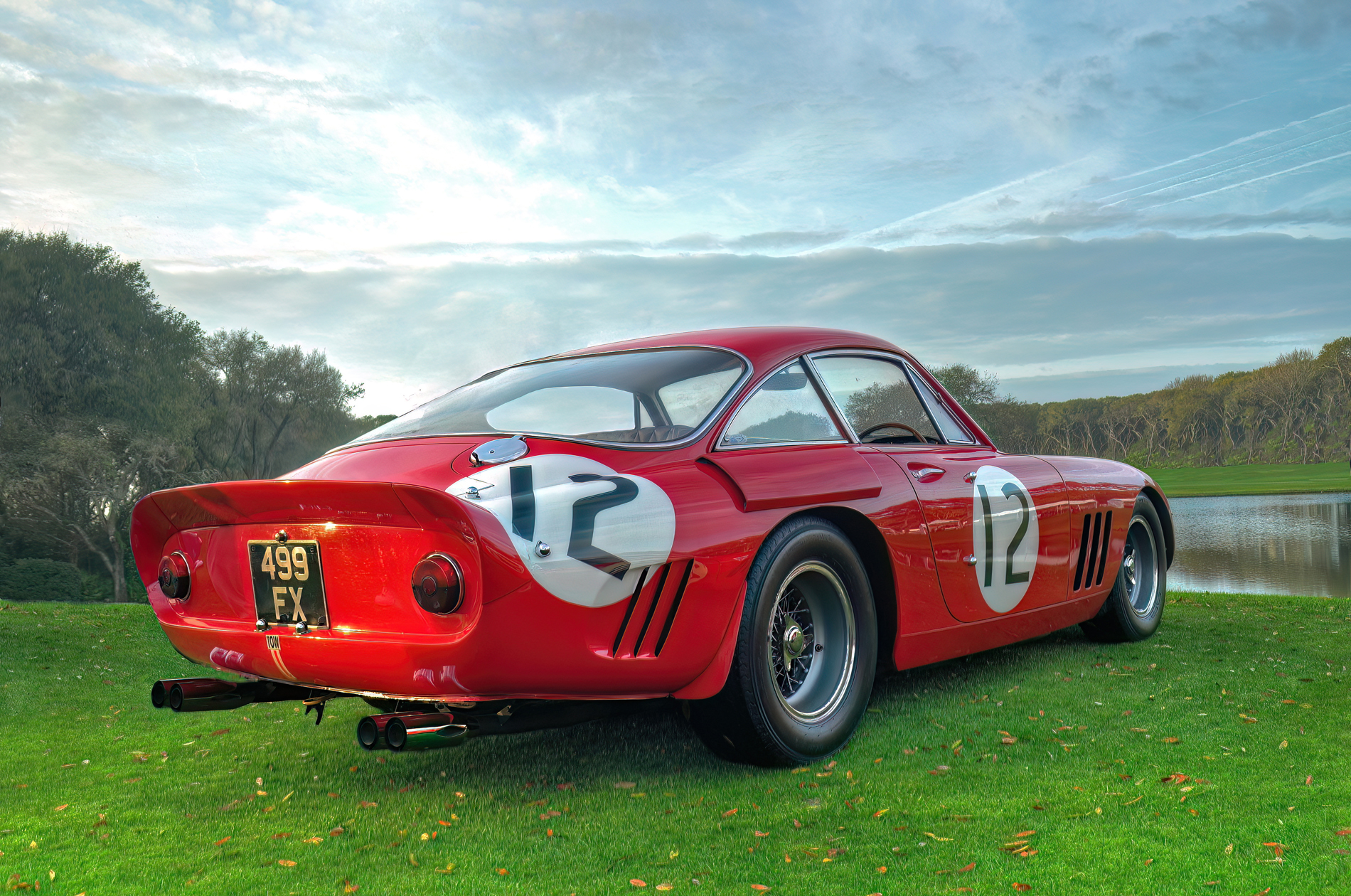
The LMB ran in the prototype class at Le Mans in 1963 for Maranello Concessionaires driven by Jack Sears and Mike Salmon to finish 5th overall. This 1962 Ferrari 330 LMB was the only LMB of the four that finished the race. Lorenzo Bandini drove it later in the United Kingdom. The LMB is also known as the first car to reach 180 mph down the Mulsanne straight at the Le Mans the same year eclipsing the 250P and the GTO.
There were four 330 LMBs specifically built to compete in long distance events like Le Mans and were designed around an extended chassis just for these cars. The unique Tipo 574 chassis was also fitted with a dry sump system, which allowed the engine to sit lower leading to a lower coefficient of drag. Built in the same prototype shop as the GTO, serial number 4725 is the last of four 330 LMBs built and featured lightening techniques such as Plexiglas side and rear windows. Based on the 400 SA engine the Tipo 163 variant was a V12 with 3,967 cc displacement, six weber carburetors and an output of 400 bhp at 7,500, which was a good 50-80 bhp than the GTOs.
Overview
- Production Year: 1962
- Manufacturer: Ferrari
- Class: Sports car
- Body Style: Berlinetta (coupe)
Design and Specifications
- Engine:
- The Ferrari 330 LMB was powered by a 4.0-liter (3967 cc) Colombo V12 engine.
- This engine produced approximately 390 horsepower at 7,500 rpm.
- Transmission: 4-speed manual gearbox
- Chassis: The car featured a tubular steel chassis, designated as Tipo 539/566.
- Suspension:
- Front: Independent suspension with double wishbones and coil springs.
- Rear: Live axle with semi-elliptic leaf springs and trailing arms.
- Brakes: Disc brakes on all four wheels, which was advanced for its time and essential for high-performance racing.
Performance
- Top Speed: The Ferrari 330 LMB could reach a top speed of around 175 mph (282 km/h), making it one of the fastest cars of its era.
- Acceleration: Its powerful V12 engine and lightweight construction allowed for rapid acceleration, making it competitive in endurance racing.
Design Features
- Bodywork: The 330 LMB featured a streamlined, aerodynamic body designed by Pininfarina and built by Scaglietti. Its design was optimized for high-speed stability and performance in endurance races.
- Interior: The interior was focused on functionality and weight savings, with minimalistic features typical of racing cars. It included essential instrumentation, bucket seats, and lightweight materials.
Racing History
- Le Mans: The "LMB" stands for Le Mans Berlinetta, indicating its intended purpose for endurance racing, particularly the 24 Hours of Le Mans. The 330 LMB was developed to compete in this grueling race, where durability and speed were paramount.
- Rarity: Only four examples of the 330 LMB were ever built, making it one of the rarest Ferrari models. This limited production adds to its allure and significance among collectors and enthusiasts.
Legacy
- Historic Significance: The Ferrari 330 LMB represents a critical evolution in Ferrari's racing cars, bridging the gap between the earlier 250 GTO and the later 250 LM. It showcases Ferrari's commitment to engineering excellence and racing success.
- Collector's Item: Due to its rarity, performance, and historical importance, the 330 LMB is highly sought after by collectors. Well-preserved examples are extremely valuable and often featured in prestigious classic car auctions.
You may purchase a print of the 1962 Ferrari 330 LMB in our dElegance 2012 online gallery.

